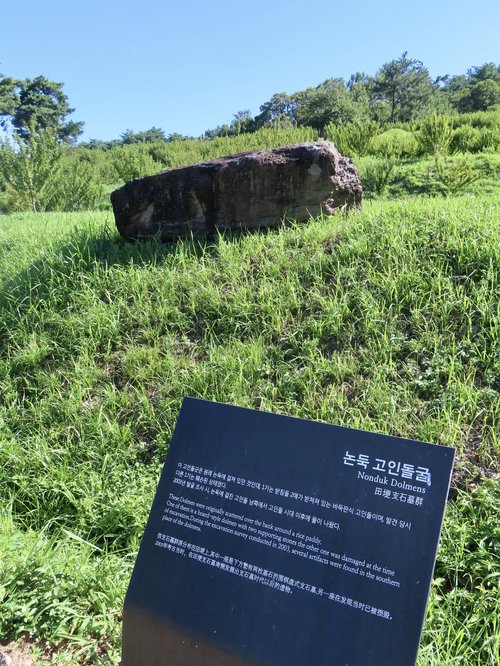Korea's Dolmen WHS has long been the lowest rated site in Korea. My theory is there are three reasons for this. Firstly, I think Korea has struggled to show off its OUV and how best to enhance the visitor experience. Secondly, for the casual visitor there just is not enough obvious, accessible remains that clearly stand out as megalithic structures shaped and transported by ancient people. For example, if the dolmen were in a straight line or pattern, this would indicate an obvious human alteration. Without these clearly visible indicators, the dolmens in Korea largely fail to resonate as outstanding examples of a megalithic culture (despite their enormous number of dolmen). Lastly, all three components take some work to visit and the journey often feels excessive compared to the reward.
I have completed visits to all 3 dolmen sites. These visits span 17 years.
Ganghwa (Gyeonggi-do)
After visiting the largest and most impressive single dolmen in Korea, you can make your way to other inscribed dolmen locations on the island at Gyosan-ri, Samgeo-ri, Gocheon-ni, and Osang-ri. I walked the forest trails to Samgeo-ri and while nothing was spectacular, it at least added to the experience of searching for dolmen on Ganghwa Island. To enrich your experience in Ganghwa-do you might visit some of the maritime fortifications on the coast facing Gimpo or hike Manisan.
Gochang (Jeollabuk-do)
I tend to agree Gochang is likely the best component to visit if you only have time for one Dolmen site. A caveat in choosing Gochang is that Gochang County is a UNESCO Biosphere Reserve. This reserve includes the dolmens, Gochangeupseong (Town Fortress), Gochang Tidal Flat, Ungok Wetland, and Seonunsan Provincial Park. Choosing Gochang to explore (via car) means 2 WHS, 1 UNESCO Biosphere Reserve, and 2 Ramsar Wetlands! Perhaps one of the most unique and beautiful counties in Korea.

Hwasun (Jeollanam-do)
I managed to take the 318 bus from Gwangju to Hwasun Dolmen and return without being stranded by infrequent buses. I didn't get fancy though, I simply chose Hwasun Dolmen for a 1/2 day trip and then did Unjusa separately the following day (same bus route). This allowed me to have the time I wanted to explore each site, without stressing too much over the bus schedule. I found Hwasun to be the most beautiful landscape of the 3 components. Pingmaebawi Dolmen (200 tons) with its inscription from the 1920's by a local family to mark their land boundary was interesting.
Besides these 3 inscribed clusters, there are other pockets of dolmen in Korea (Paju, Goheung). Each visit left me partially unsatisfied, yet I can see why they are inscribed.
Flickr Album